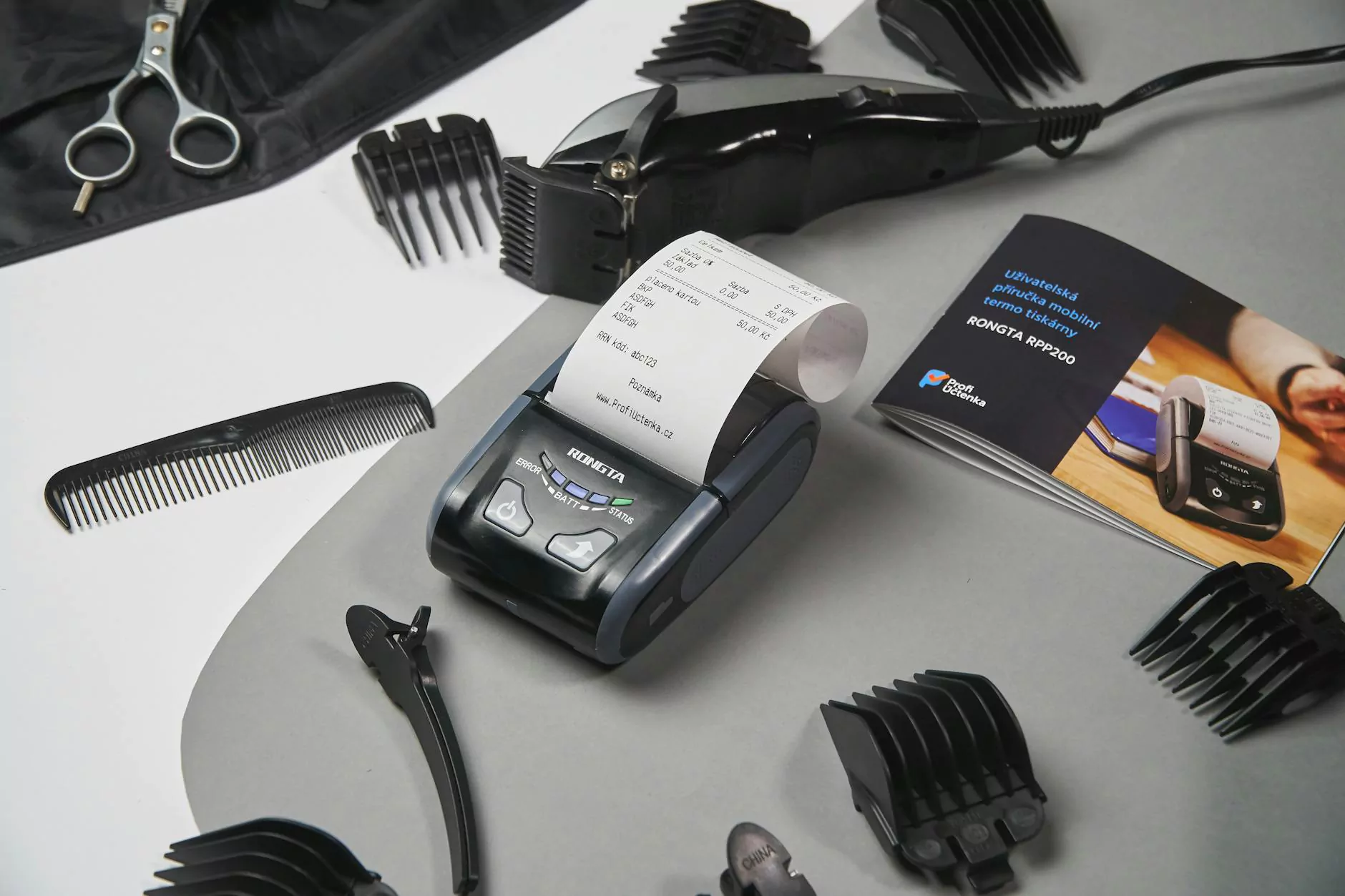Understanding Retail Tag Printers: A Comprehensive Guide

If you are in the retail sector, you understand how crucial it is to maintain an organized inventory and deliver exceptional customer experience. One often overlooked yet essential tool in achieving these goals is the retail tag printer. In this article, we will delve into everything you need to know about retail tag printers, their advantages, types, and how they can significantly enhance your business operations.
What is a Retail Tag Printer?
A retail tag printer is a specialized device designed to produce labels and tags that are used for various purposes in the retail industry. These printers can create a variety of label types, including price tags, barcodes, QR codes, and promotional labels. The use of retail tag printers is vital as they automate the labeling process, ensuring accuracy and consistency throughout your inventory.
Advantages of Using a Retail Tag Printer
Investing in a retail tag printer comes with numerous benefits, making it an essential tool for any retail business. Below are some of the most significant advantages:
- Improved Efficiency: Retail tag printers streamline the labeling process, allowing for quicker and more accurate tag production.
- Cost-Effective: By printing your tags in-house, you can save on outsourcing costs, enabling better control over your budget.
- Customization: Retail tag printers enable businesses to design customizable labels that align with their branding, ensuring a professional appearance.
- Versatility: These printers can produce a variety of labels, from simple price tags to complex promotional materials, addressing various needs within a retail environment.
- Inventory Management: Accurate labeling assists in efficient tracking and management of inventory, reducing losses and enhancing customer satisfaction.
Types of Retail Tag Printers
Understanding the different types of retail tag printers available on the market will help you choose the right one for your business. Here are the common categories:
1. Direct Thermal Printers
Direct thermal printers use heat to produce images on specially designed labels. They are ideal for printing receipts and short-term labels, offering:
- Fast printing speeds
- No need for ink or toner
- Compact design suitable for small workspaces
2. Thermal Transfer Printers
These printers use a thermal transfer ribbon to print onto labels, which makes them suitable for long-lasting labels. Advantages include:
- High-quality printing
- Ability to print on a variety of materials
- Durable labels that resist fading and smudging
3. Inkjet Printers
Inkjet printers are versatile devices that can produce high-resolution images and labels. Benefits include:
- Color printing capabilities, ideal for promotions
- Suitable for both large and small print runs
- Customizable label designs
4. Laser Printers
Laser printers offer fast printing speeds and high-quality results, ideal for businesses that require volume printing. Features include:
- Cost-effective for high-volume printing
- Sharp, clear text and images
- Suitable for labels requiring barcodes or intricate designs
Factors to Consider When Choosing a Retail Tag Printer
When selecting a retail tag printer, it’s crucial to assess various factors to ensure you make the right investment:
- Print Volume: Determine how many tags you need to print daily or weekly to choose a printer that can handle your volume efficiently.
- Label Material: Consider the types of labels you need. Will they be paper, plastic, or specialty materials? Ensure the printer can accommodate these materials.
- Print Quality: If your tags require detailed graphics or barcodes, ensure that the printer you select can deliver high-resolution prints.
- Software Compatibility: Ensure the printer is compatible with your existing systems for easy integration and efficient operation.
- Budget: Set a budget that not only includes the cost of the printer but also the ongoing costs for labels, ribbons, and maintenance.
How to Use a Retail Tag Printer Effectively
Once you have selected a retail tag printer, it is essential to utilize it effectively to maximize its benefits:
1. Regular Maintenance
Routine maintenance is crucial in ensuring consistent print quality. Clean the print head and replace ribbons or cartridges as needed to avoid issues.
2. Design Your Labels Wisely
Use intuitive software to design your labels. Ensure that all necessary information, like prices and barcodes, are clearly visible. Backgrounds should enhance readability, not hinder it.
3. Track Your Inventory
Utilize the tagging process to keep an up-to-date inventory. Accurate labels help in streamlining stock management and prevent loss due to mislabeling.
4. Train Your Staff
Train your staff on the operation of the printer to ensure that all team members can effectively produce and apply tags across your business.
Environmental Considerations
As businesses increasingly adopt sustainable practices, it is vital to consider the environmental impact of your retail tag printer. Opt for printers that support recyclable materials and are energy-efficient. Additionally, look into biodegradable label options that minimize plastic waste.
Conclusion: Embrace the Power of Retail Tag Printers
The use of a retail tag printer is no longer optional for serious retailers. As you enhance your efficiency and organization, your capacity to serve customers grows, driving overall business success. Whether you're creating labels for promotions, inventory management, or streamlined shipping processes, investing in the right printer will facilitate an organized and efficient retail environment.
For more information about retail tag printers and their effective use in your business, explore our other categories including Printing Services and Office Equipment at barcodesforbusiness.co.uk.









